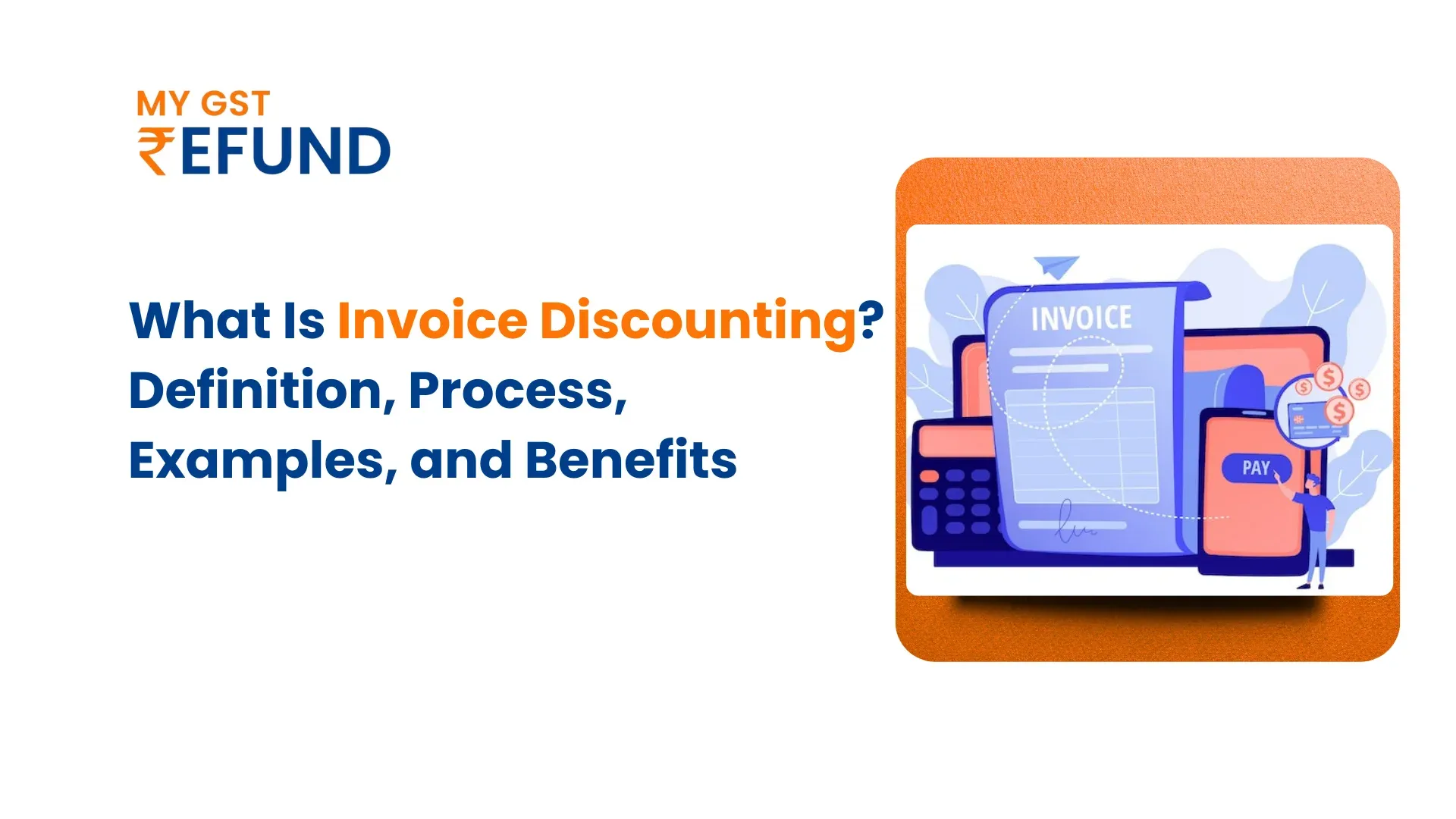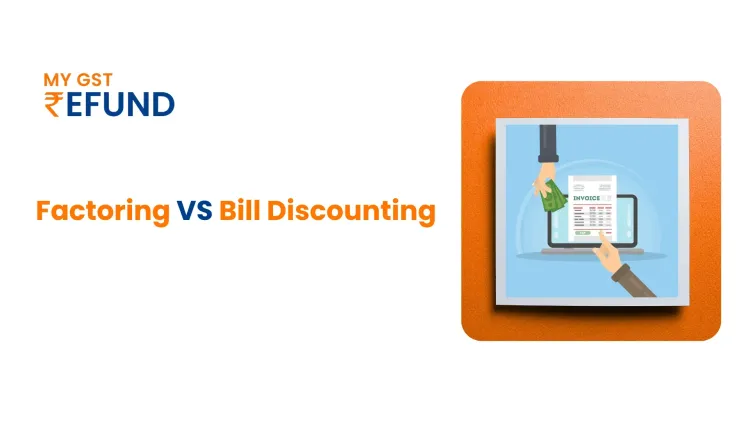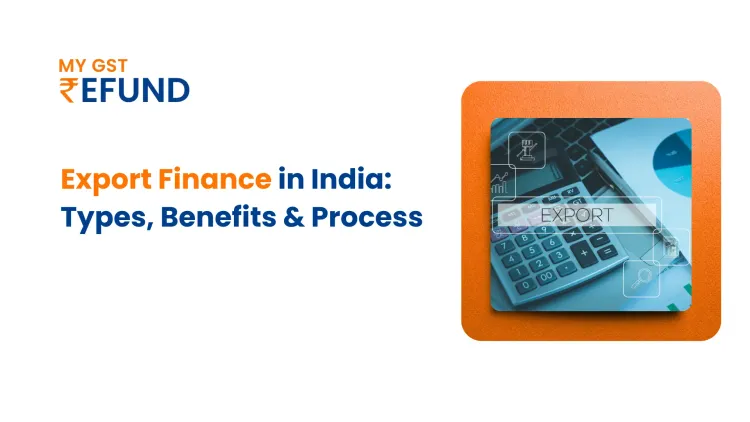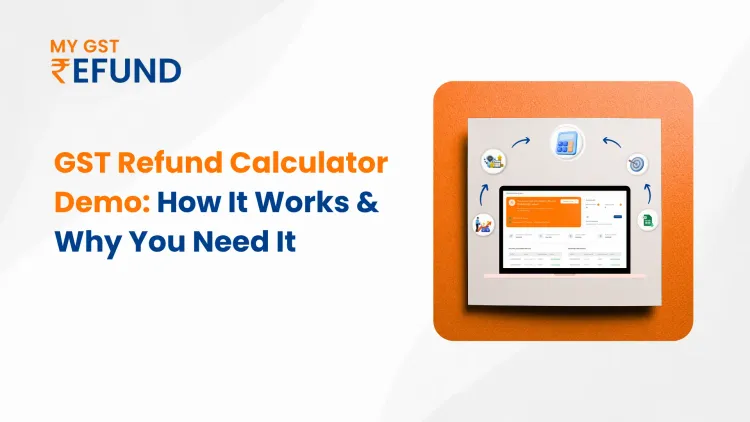What Is Invoice Discounting? Definition, Process, Examples, and Benefits
Invoice discounting is a process of Export Finance that lets businesses unlock cash tied up in unpaid invoices. It helps improve cash flow and does not involve applying for typical loans
This blog introduces information about invoice discounting through its definition and operational process, alongside types, benefits, and differences, while also exploring Invoice Discounting vs Invoice Factoring.
What Is Invoice Discounting?
Invoice discounting is a short-term financing used by businesses that use their outstanding invoice amounts as collateral to secure working capital funds. It falls under invoice financing, where invoices act as collateral to access immediate funds.
Businesses generally wait 30 to 90 days for customer payments, while this method lets them receive cash right away and then get paid as a standard from the customer.
Example
Suppose you finance an invoice worth ₹20,000 through a financial institution. They will provide you with an advance of up to 80% of the invoice value, which means you’ll receive ₹16,000 once the invoice is assigned to them. When your customer pays the full ₹20,000 on the due date, the finance company will release the remaining ₹4,000 to you, after deducting a small fee, say around ₹400. So, in this invoice discounting arrangement, the discount or cost of financing would be ₹400.
Importance for Businesses:
Invoice discounting helps to boost the cash flow in the business organisation. Invoice discounting ensures that businesses, especially small and medium enterprises (SMEs), can meet their cash requirements.
By getting fast working capital, businesses can:
- Make sure to pay all your vendors and staff when you are expected to do so.
- Keep control over the inventory at all times.
- Launch new projects by using capital before your invoices are paid.
How Invoice Discounting Works?
The invoice discounting process is simple and efficient:
1. Give your unpaid invoices to a partner or a financial institution that offers discounting services.
2. You can get 80–90% of what the invoice is for before the work is done.
3. After payment is made on the invoice, the lender removes their fee and sends the balance to the client.
This invoice discounting process offers quick liquidity without transferring customer relationships to the financer, unlike invoice factoring.
Types of Invoice Discounting
There are different options based on what each business requires.
Confidential Invoice Discounting: The customer operates without knowing about the Confidential Invoice Discounting arrangement.
Disclosed Invoice Discounting: The customer receives notification regarding Disclosed Invoice Discounting and receives specific payment instructions from the lender.
Selective Invoice Discounting: It allows businesses to choose which individual invoices they want to receive discounts for, rather than providing discounts on all sales ledger entries.
All eligible invoices are consistently provided to all invoices that meet the requirements of the Turnover Discount
Benefits of Invoice Discounting
The following are the benefits of Invoice Discounting that are offered:
Easy Access to Money: It permits a steady flow of cash coming in and decreases the need for credit or loans.
No Collateral Required: Your business assets do not need to be mortgaged because invoices work as collateral.
Strengthened client relations: Unlike invoice factoring, you maintain complete control over customer communication.
Boosts Business Growth: After saving money, businesses can use it for growth, to advertise themselves, or to purchase more products.
Eligibility Criteria for Invoice Discounting
Despite each financier’s standards, there are general requirements that apply:
- Businesses are advised to have B2B deals where they offer credit terms.
- All invoices should be valid and not open to debate.
- Firms are generally looked for with an annual turnover of at least ₹1 crore.
- If your company has a positive and stable payment history, along with good finances, the chance of being approved improves.
Most benefits are experienced by startups, SMEs, and companies that export their products.
Invoice Discounting vs. Other Financing Options
Best Practices for Implementing Invoice Discounting
The best practices to be followed for implementing invoice Discounting:
Verify Invoice Authenticity: Each invoice you submit should be verified and should not be disputed.
Track Customer Payments: Safeguard the company’s eligibility by ensuring that debtors meet their payment deadlines.
Monitor Cash Flow: Opt for a secure partner that shares their costs and allows adjustment in terms when needed.
How Does MYGSTRefund Invoice Discounting Help?
MYGST Refund Export Finance helps exporters get paid faster by giving early access to up to 90% of the invoice value. It helps to smooth cash flow and offers flexible financing options.
Conclusion
Invoice discounting is the best solution for businesses looking to maintain liquidity without borrowing in the traditional sense. Because of its easy terms, fast approvals, and private services, it is perfect for handling delayed invoices.
Frequently Asked Questions
What is invoice discounting in simple terms?
It lets companies borrow money to pay invoices they haven’t been paid for yet, and this increases cash flow.
What is the risk in invoice discounting?
Customers not paying their bills, paying too much in fees, and strict rules for new businesses are some of the risks in this industry.
What are the negative effects of discounting?
The negative effects of invoice discounting can lead to reduced profit margins and poor long-term cash planning.
Is invoice discounting profitable?
Good management allows companies to access extra funds without having to borrow or give away equity, making growth easier.
Related Posts








